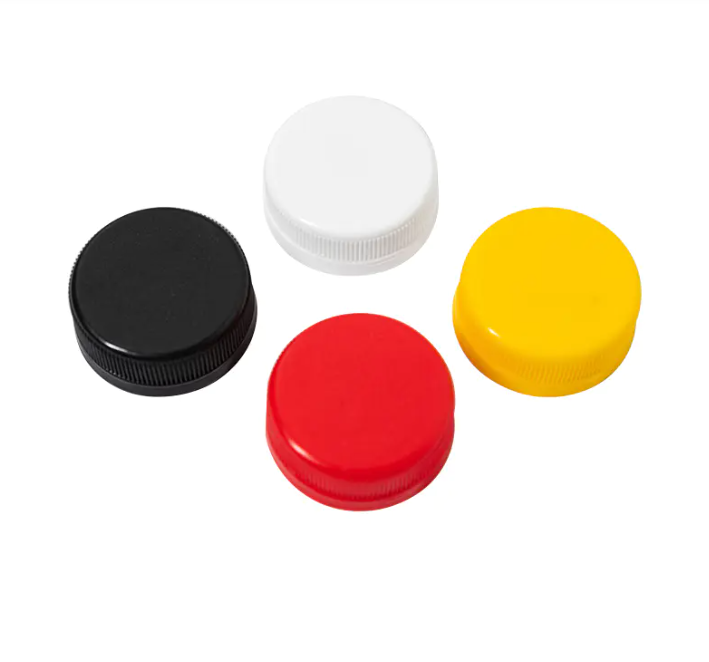chuangzhen@capping-machine.net

EN
In modern packaging manufacturing, the Cap Compression Machine has become a powerful solution for producing bottle caps of various sizes, shapes, and colors. Unlike traditional injection molding systems, which often limit design flexibility and require longer changeover times, compression technology enables manufacturers to quickly adapt to changing market needs. This adaptability is especially valuable in industries such as beverages, personal care, and pharmaceuticals, where packaging differentiation plays an important role in brand recognition and consumer choice.

One of the core advantages of compression technology lies in its ability to produce caps with different diameters with minimal equipment modifications. Advanced compression systems utilize interchangeable cavity designs, allowing manufacturers to switch production without reconfiguring the entire line. This means production facilities can shift in a short time from making small water bottle caps to larger closures for household products.
Engineers have improved mold design processes to ensure consistent resin flow and pressure distribution, regardless of cap size. As a result, manufacturers can maintain high sealing quality across different specifications without increasing material waste. This precision in size variation allows companies to respond quickly to new product launches or packaging redesigns without compromising efficiency.
The ability to manufacture uniquely shaped caps has become a defining feature of compression technology. While injection molding can struggle with complex geometries or longer cooling times, compression systems apply uniform pressure within the cavity, making it possible to produce more intricate designs.
From ergonomic contours that improve grip to special closures that support tamper-evident functions, compression molding technology opens new opportunities for functional and aesthetic innovation. Manufacturers can also explore various rib patterns, surface textures, and customized thread designs to enhance usability and brand identity. These shape-oriented innovations improve consumer experience while giving packaging designers greater creative freedom.
Beyond size and shape, color flexibility is another key advantage of compression machines. Colorants are mixed directly with resin pellets before entering the compression chamber, ensuring uniform distribution and consistent tones across different production batches. This approach reduces risks of streaks or discoloration often encountered in other molding methods.
Equally important, compression systems support fast color changes with minimal downtime. Production lines can be flushed and reset efficiently, enabling manufacturers to produce multiple color variations within a single shift. This flexibility supports marketing strategies such as seasonal packaging or limited-edition designs that rely on distinctive visual appeal.
A common concern in manufacturing is whether flexibility compromises efficiency. Cap compression machines are designed to address this challenge, combining adaptability with high-speed performance. Multi-cavity rotary molds maintain continuous production even during design changes, while advanced cooling and temperature control systems help shorten cycle times regardless of cap complexity.
This balance between flexibility and output allows manufacturers to meet large-scale production demands while accommodating diverse cap specifications. In practice, it means companies no longer need to choose between customization and efficiency—they can achieve both.
In consumer-driven markets, packaging must stand out on crowded shelves. Compression technology supports a wide range of cap sizes, shapes, and colors, aligning with brand strategies that prioritize differentiation. For beverage companies, unique cap shapes can reinforce product positioning, while color variations can highlight flavor distinctions.
In personal care and pharmaceutical sectors, precise closure designs ensure tamper-evidence and dosage control, both essential for earning consumer trust. The flexibility of compression technology allows these industries to enhance their packaging strategies without being constrained by rigid production systems.
The integration of digital design tools and smart manufacturing systems is expected to further improve flexibility in compression molding. CAD-driven mold development combined with AI-assisted process monitoring will enable manufacturers to produce more advanced designs with fewer trial-and-error steps. Digital twin simulations can predict performance for different cap geometries, accelerating the time-to-market for new packaging concepts.
As global markets continue to evolve, the ability to efficiently produce diverse bottle caps will remain a strong competitive advantage. The engineering versatility of cap compression machines ensures that companies can adapt to changing consumer expectations, regulatory requirements, and brand strategies with greater confidence. For manufacturers seeking advanced solutions in this field, Chuangzhen Machinery provides reliable cap compression equipment and innovative engineering support that help businesses meet both flexibility and efficiency goals.
Copyright © Taizhou Chuangzhen Machinery Manufacturing Co., Ltd. All Rights Reserved.
